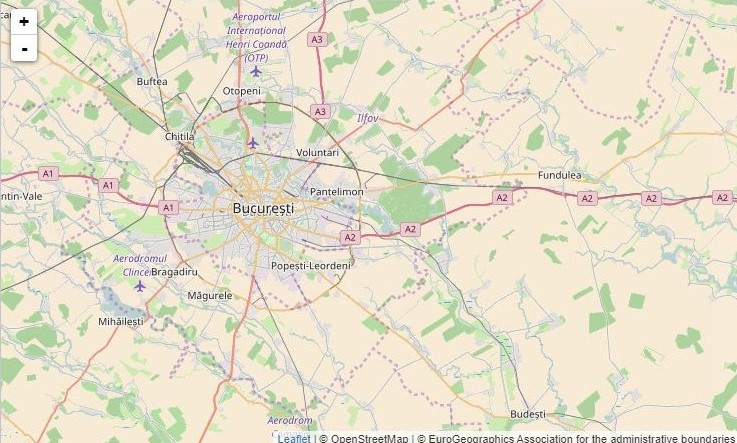This EU-funded project will upgrade and install drinking water and wastewater infrastructure in Romania’s Ilfov county, which encircles the capital Bucharest, to contribute to the country’s compliance with EU directives and help fulfil obligations outlined in its Accession Treaty.
New drinking and wastewater infrastructure in Romania’s Ilfov county
- 14 July 2020
The project area has 235 169 inhabitants. The aims are to connect more residents to the sewerage network, ensure better effluent quality and fewer sewage leaks, and provide drinking water that meets legally imposed quality standards.
Improved water connections
Work will be undertaken in 21 supply areas covering 52 communes. The connection rate to the water supply system will increase from 134 283 people (57.1 % of the total population) to 234 310 (99.6 %). The number of people who will have access to legally compliant water supply will increase from 41 064 (17.5 %) to 193 246 (82 %).
A total of 29 wells will be rehabilitated and 15 extended. Water mains will be extended by 107.7 km and 1.1 km of existing mains will be rehabilitated. Six chlorination stations will be rehabilitated and seven extended.
The capacity of 14 water treatment plants will be increased. Seven water tanks will be rehabilitated and 17 extended. Four pumping stations will be rehabilitated and 22 extended. The water network will be extended by 580.5 km while 7 km of the existing network will be rehabilitated.
Of the service areas where work will be undertaken, four – Glina, Posta-Balaceanca, Tanganu-Caldararu and Jilava – are only connected to the Bucharest water system.
Eleven get their water from the Bucharest system while also using wells. These include Pantelimon, Branesti, Mogosoaia, Bragadiru, Cornetu, Ciorogarla, Domnesti, Clinceni, Magurele, Balotesti, and Tunari.
The remaining six – Cernica, Ciolpani, Moara Vlasiei, Gradistea, Gruiu, and Petrachioaia – are only supplied by wells.
Sewerage network extension
Of the total biodegradeable organic load in the project area, only 43.29 % is connected to the collection system and treated in compliance with Directive 91/271/EC on the collection and treatment of urban wastewater. The project intends to increase this to 100 %.
Work will be undertaken in some parts of Bucharest and the communes of Glina, Cernica, Tanganu, si Balaceanca, Gruiu and Silistea. The wastewater from these areas goes to the treatment plants in Balaceanca, Glina and Gruiu.
The project includes Bucharest, which has its own wastewater treatment plant, and the following communes with their own treatment plants: Balotesti, Branesti, Moara Vlasiei, Peris, Ciolpani, Gradistea and si Petrachioaia
The sewerage network will be extended by 613.8 km and 1.6 km of the network will be rehabilitated. The pumping mains network will be extended by 147.7 km while 0.9 km will be rehabilitated. Of the existing pumping stations, 21 will be rehabilitated and 272 extended.
Five new wastewater treatment plants will be built and six extended.
High water losses
Currently, there are high levels of water losses in addition to a lack of water storage capacity and no supervisory control and data acquisition (Scada) system to monitor parameters such as water pressure and equipment function. Underground sources are of a poor quality, and the water sourced from them is not properly treated.
The centralised water supply system consists of 109 wells, 36 km of water mains, six water treatment plants, 17 chlorination and 26 pumping stations, 37 water tanks, 626 km of network and about 26 000 connections.
Old wastewater infrastructure
The wastewater network for the project area lacks a Scada system to oversee and monitor the network. In addition, pumping stations do not operate adequately.
Treatment capacity is insufficient and because pipes are old and worn, sewage leaks into the soil and groundwater. Domestic wastewater is discharged into local watercourses without having been treated.
The wastewater infrastructure has 14 treatment plants, 126 pumping stations, 458 km of network and about 25 800 connections.
The project will include a microbiology laboratory and equipment for sewerage cleaning, transport and operation, as well as leak detection and CCTV. Also included are technical assistance for project management and works supervision, as well as a project audit.
Total investment and EU funding
Total investment for the project “The regional project for the development of water and wastewater infrastructure in Ilfov county” is EUR 331 345 079, with the EU’s Cohesion Fund contributing EUR 222 088 033 through the “Large Infrastructure Operational Programme Romania” Operational Programme for the 2014-2020 programming period. The investment falls under the priority “Development of environmental infrastructure under conditions of efficient resource management”.

